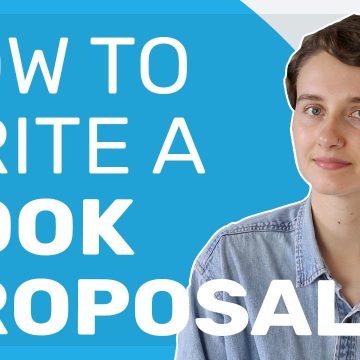Writing a book is one thing, but getting it published is yet another test. While you may decide to go the self-publishing route, traditional publishers can offer you the credibility, industry knowledge, and professionalism you need, especially if you’re new to the publishing world.
However, convincing a publishing house to take a chance on your book requires an excellent proposal, especially due to the competitive markets. This article will guide you on how to write a winning proposal for your book.
Perhaps you don’t feel capable of writing a proposal by yourself; our book writing service Book-Success, will get you a professionally written proposal to guarantee your publishing offer.
What Is A Book Proposal?
A book proposal is a document typically written for nonfiction books to persuade the publisher to believe in the marketability potential of your book. It is needed to ensure the publishing house that your book idea is worth the risk, time, effort, and money they will put into publishing your work.
Book proposals may take several weeks to be critically researched and developed. Some complex pieces may require over 50 pages in the proposal(including sample chapters); however, most proposals are between 10 and 25 pages(double-spaced), excluding sample chapters.
Why Is A Book Proposal Important?
Beyond the fact that they are intended to convince publishers of your book’s economic potential, book proposals can also serve as a means to improve your skills as a writer.
- It helps you straighten out your thoughts and ideas
- It compels you to fully understand your story and easily communicate these thoughts to your intended audience.
- It helps you know the true strengths of your story.
So, whether your book idea makes the cut or not, book proposals are an important learning curve for all writers. However, it is best to get quality proposals delivered fast from book ghostwriting services by professionals who know what publishers look out for. Now, let’s get into the steps you should take when writing a book about your life.
What You Should Avoid When Writing Your Proposal
- Avoid focusing on your book’s content: In no way does this suggestion aim to discredit the importance of what your book is about, but most times, publishers want to know the current relevance of your book to your intended readers. Instead of getting lost in the content of your book, you should tie it to a current, urgent need that your book aims to address in a new and interesting way.
- Avoid over-explaining your book’s theme: There’s nothing wrong with being completely obsessed with your story that you just want to give a thorough analysis of your book. While you may be required to do this in your proposal, you should remember that your main argument is to show why your book is fresh and compelling enough to demand your readers’ attention.
- Avoid posing your book as an alternative: Your selling point shouldn’t be based on the fact that your book is shorter or more accessible than similar books or alternatives. It is difficult to show that your readers will rush to the stores to buy your book only because of those reasons. Instead, it would help if you showed what other books failed to meet, how your book meets these challenges, and how it could solve current, urgent issues.
- Avoid relying heavily on your personal experiences of the topic: Even though no one doubts the unique experiences you have encountered, you shouldn’t use these as a guaranteed selling point, especially if you’re a new and unestablished writer.
What Should A Book Proposal Have?
Book proposals vary widely as different publishers or genres may require different details. Ultimately, a proposal should be as clear and persuasive as possible. These guidelines can serve as a basic set of the necessary contents of a proposal. You may decide to include or leave out certain segments at your discretion, but it is important to understand the important contents.
- Header
Begin with the book’s title and your necessary contact details.
- Competing titles analysis: This area will help you clarify your idea and save you a lot of time. Whatever you do, don’t claim that your book has no competition. If there are no competitors, your book may be so unusual and specialized that it will not sell.
The accessibility of online material for some topics and categories might immediately eliminate the potential for a print book. This section highlights competitor titles and how yours fits into the larger picture. The study normally comprises 5 to 10 titles, but discussing just a few is fine if your book is on a specialist topic or for a specific readership.
- Begin by recording the title, subtitle, author, publisher, year of publication, page count, price, first published format (typically hardcover or paperback), and ISBN for each competing title.
- Information like Amazon ranking, star rating, or reviews is generally unnecessary.
- Also, don’t be concerned about including the sales figures for the rival titles. That information is unavailable to the average author, and the agency or editor can seek it themselves.
- Now down to the nitty-gritty; here, you briefly outline your book’s approach compared to each of your competitors. This should take between 100 to 200 words per title.
- You should be able to distinguish your title from the competition and demonstrate why your book is needed. You don’t need to talk down on your competition, as that is unprofessional behavior.
- A synopsis of your book
You may write a short synopsis(a one-to-five-paragraph description of your work) where you summarize your book clearly and convincingly or a longer, more detailed synopsis.
It should state your goals, why you are the most suitable person to undertake the book’s writing, or any unique relations you’ve made. Also, emphasize why this project is commercially viable.
- Chapter Outline
You create a concise summary of each chapter’s idea, information, or story. Make a list of chapters, each with a few phrases outlining what will be covered. You may also use a table of contents if you feel your work doesn’t need an outline. The crux of the matter is to demonstrate how your book will unfold from start to finish.
- Sample chapters
For fiction projects, you may submit the first 40 to 50 pages of your manuscript or the complete manuscript if applicable. However, you may include the text you’d use as an introduction along with one or two example chapters for nonfiction works.
The quality of the writing is vital in both cases, but especially in fiction. In the case of fiction, make sure to construct your first few pages correctly to hook the reader and keep them turning those pages.
- Book details
In this section, you may provide details such as an estimate of how many words the finished book will include or sample photographs of the finished book(whether the book will be in color or black and white and whether the images will be free to use or demand a fee for acquiring the rights to use them).
If the proposal is for an art book, add some of the strongest photographs upfront and possibly a few pages of some images towards the end or throughout the proposal to illustrate the content.
- Author Biography
Here, you must persuade agents and editors that you are the ideal author for the book. You may take inspiration from any of your existing bios on LinkedIn or Medium; however, it would be best if you created something fresh.
You should demonstrate how your knowledge and experience provide you with the ideal platform to approach your target audience. Suppose you don’t have the required expertise. In that case, you can build your credibility by showcasing your relations to other experts in the writing sphere, your online viewership, or your personal marketing success.
- Intended audience
Who is most likely to buy your book? You want to describe the people that will be easiest to persuade or the most potential readership. Publishers want you to give them something other than broad industry data; they want you to paint a distinct picture of the type of individual who will be interested in what you have to say.
A statement such as this shows you made detailed market research: Recent [mention a competing title in your writing genre] reviewers complain about not keeping up with new facts and trends.
- Market plan
In this section, describe what you can and will do to market and promote the book. Never say what you intend to do, simply what you can and will accomplish, without the push of a publishing house but with your current resources.
Many writers develop their marketing plans in a very speculative manner, discussing things they are prepared to undertake. This is an unhealthy practice, and you should avoid it at all costs. Instead, you must be confident, realistic, and direct about everything that will happen, with or without the publisher’s assistance.
Here’s what a strong plan sounds like: My blog on [the book topic] has already received 2,000 unique visitors per month within three months of its start. Your marketing plan shouldn’t show what you’re willing to try but how many strong relationships you have—the ones already working for you—and how many readers you already reach.
This guide is in no way exhaustive, but it helps you effectively clarify your project’s vision. This list is flexible, and it’s up to you to decide what to put in and leave out. But, so far, we’ve covered the most important.
At Booksuccess, we are determined to bring your unique stories to the world. We want to hear no story more than the one you have to tell, and we will make you get your proposal right. Contact us today and let us create a book, a legacy, for you
















